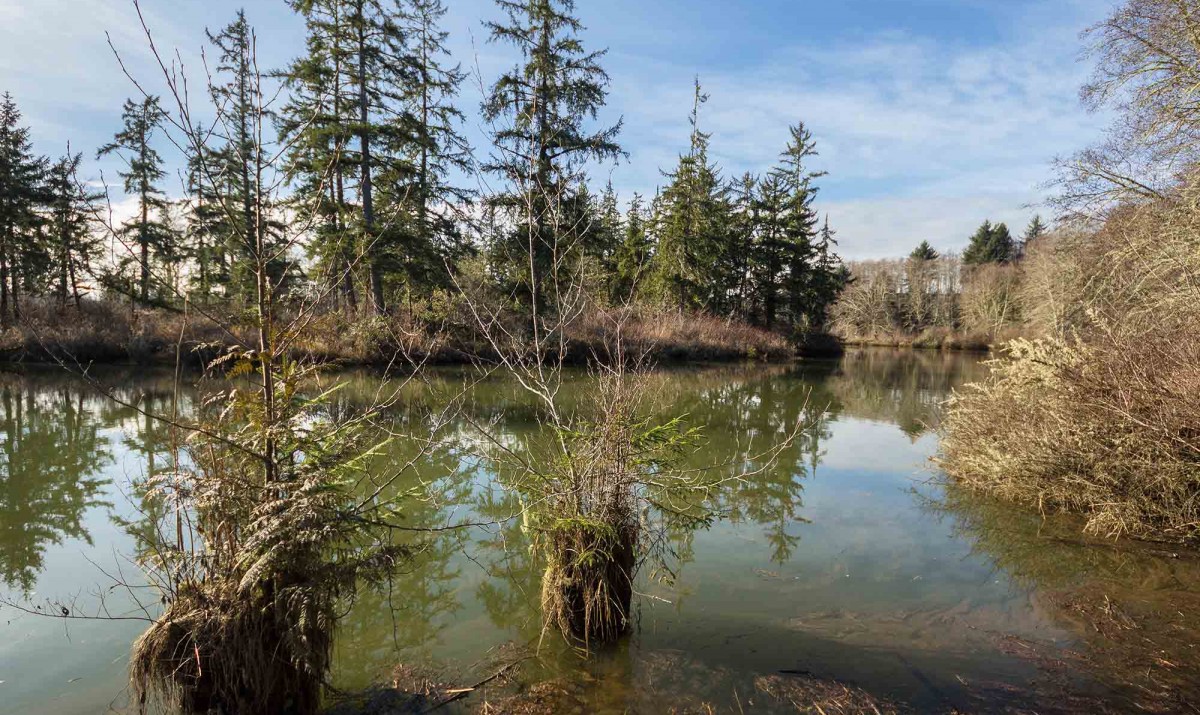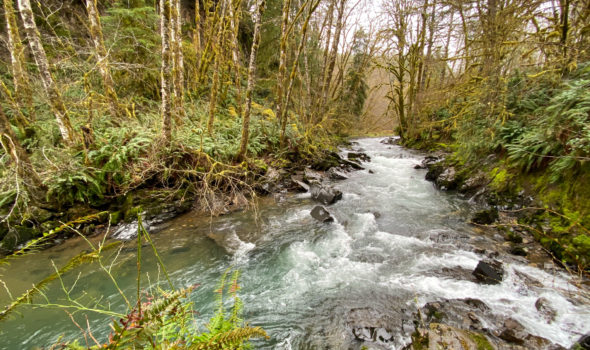The Big Picture
Located in southwest Washington’s Wahkiakum County, the Grays River twists by farmlands and Sitka spruce swamps before meeting the Columbia at Grays Bay. Columbia Land Trust conserved its first land here in 2000; since then, we’ve conserved and restored numerous tidal wetlands, allowing the river access to its floodplain and providing habitat for salmon, waterfowl, and many other species. One of the places we care for here, along Crazy Johnson Creek, is one of the most important areas for chum salmon in the entire Columbia River basin. During spawning seasons, the creek roils with chum—a rare sight in the Columbia today.
Why It Matters
Complex, multi-storied, and anchored by large trees, Sitka spruce swamps are critical to the health of the Columbia River Estuary. They support food webs, lower water temperature, capture sediment, and absorb floodwater, among other functions. The swamps also provide rearing habitat for the endangered coho, Chinook, chum, and steelhead—whose runs along the Grays River once were legendary. The last 150 years have brought changes, as farming and then the demand for Sitka spruce during World War II led to the Sitka spruce’s rapid decline. The challenge today is how to balance the needs of people who live along the Grays River with the need to care for habitat.

